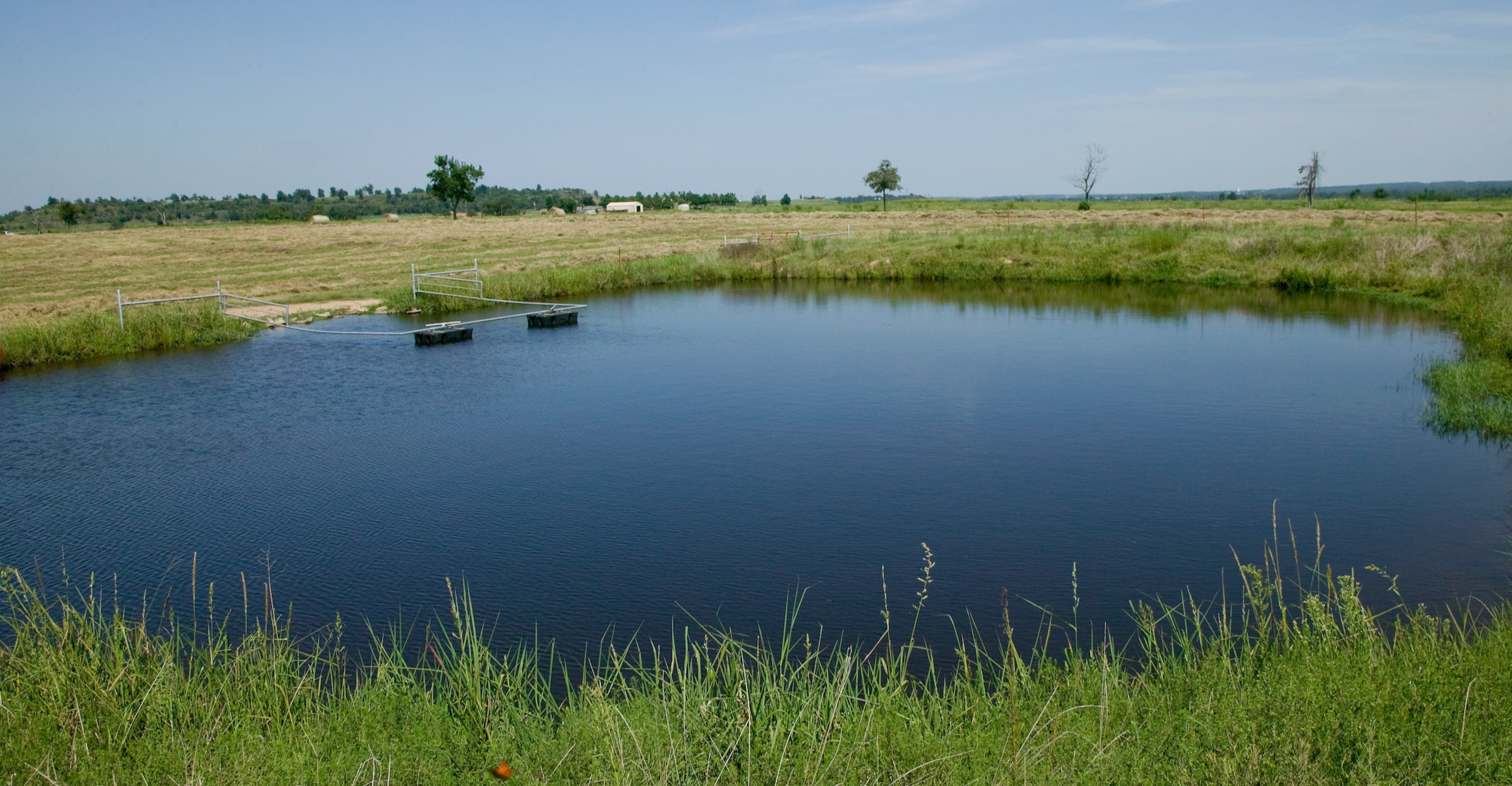
Summer pond maintenance saves on costly repairs
Thursday, July 8, 2021
Media Contact: Gail Ellis | Communications Specialist, Copywriter | 620-515-2498 | gail.ellis@okstate.edu
The rainy spring season and hot, dry months of summer are ideal times for close inspection of cattle ponds, streams, creeks and spillways. Routine maintenance of these water sources can prevent costly repairs for landowners.
Marley Beem, an Oklahoma State University Extension specialist in the Department of Natural Resource Ecology and Management, recommends monitoring pond dams and watersheds after spring overflow events to check for erosion.
“If overflows are clogged with floating debris, consult with organizations such as OSU Extension or the Natural Resources Conservation Service to help modify the structure,” Beem said. “Walk the faces of pond dams to look for surface erosion or cattle trails that can weaken a dam.”
These water sources are critical to the management of livestock and wildlife and also are used for outdoor, recreational activities such as fishing. When erosion is detected, beavers dam up streams or other pond issues arise, resolving the problem right away can save landowners thousands of dollars in long-term repairs. Other smart maintenance tactics include removing any young trees or woody shrubs while they are small because large trees and shrubs are a leading cause of dam failures.
When Wade Warren purchased his home on 80 acres a few years ago, he noticed the pond edges were taken over by cattails because they were shallow. During a drought while reworking the dam, he also deepened the shorelines, and cattails now are no longer a problem.
Ten years later, a fence cuts through the middle of the pond to provide water for his cattle and goats while the other half serves as a prime fishing spot. The moss in the spring-fed pond and the cattails around it are under control, the bank is not muddy from livestock grazing and the water is clear with visibility 10 feet below the surface.
“A little bit of maintenance goes a long way, and it will pay for itself rapidly” Warren said. “When you’re working on ponds and spillways, it’s a good idea to work your way upstream to eliminate silt. If you don’t repair trouble areas and provide good grass cover, 20 years later you’ve got so much silt you’ve got a shallow pond.”
In some cases, repairing a pond is more expensive than building a new one, and building just a pond dam can run anywhere from $2,000 to $3,000. Warren later had a second pond built on the backside of his acreage to control erosion into a nearby creek.
Other management practices he has incorporated include adding grass carp to his pond to help reduce moss. A retired Oklahoma Conservation Commission employee, Warren understands the value of creating a healthy ecosystem not only in the water, but also on the ground. Both livestock and visitors to his land benefit from the clear water, the sturdy soil and the abundant fish.
“We host church dinners and other get-togethers at our house all the time, and it’s normal to look up and see 15 or 20 kids each put a pole in the water and catch a fish,” he said.
Learn more about pond maintenance recommendations and sound aquaculture practices from Beem, or check out the OSU Extension fact sheet on Warren’s pond repairs.
